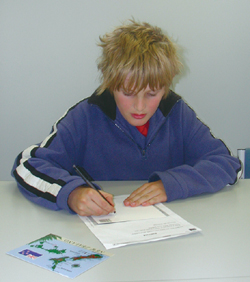If we look carefully at the UNESCO model of school, we can assume following properties of infrastructure namely:
1. comfortable and conducive to learning;(E.g., ergonomically designed work/study furnishings)
2. Safe ;
3. should not develop any anti-social behavior;
4. should encourage equal opportunity; (E.g., Promote the rights of boys and girls through equal opportunities and democratic procedures, Make accommodations for students with disabilities,
5. should encourage “child-to-child” learning and support ;
6. should be clean and attractive
7. should set an example for others in the community
8. should strive to provide an environment that is physically safe, emotionally secure and psychologically enabling.
9. should be environment friendly.
UNESCO proposed following
criteria of school.Strive for surroundings that are comfortable and conducive to learning, play, and healthy interaction, and which reduce the occurrence of harassment or anti-social behaviour.
Look for and
eliminate causes of unintended injury in school buildings and on school grounds.
Establish and enforce codes of conduct that
protect students from sexual harassment or abuse by other students or school staff.
Prohibit physical punishment of students by school staff.
Prohibit weapons on school grounds and establish and enforce rules against all kinds of violence and bullying.
Promote the rights of boys and girls through equal opportunities and democratic procedures.
Establish a conflict mediation programme.
Establish peer education programmes, and other mechanisms to encourage “child-to-child” learning and support.
Patrol areas where students’ security may be threatened, including routes to and from school.
Provide adequate lighting within and outside the school.
Provide a sufficient number of ergonomically designed work/study furnishings.
Make accommodations for students with disabilities.
Establish, on site or through referral to community agencies, a counseling programme.
Provide opportunities, a safe space and equipment for physical exercise and recreation.
Establish and enforce rules to make the school drug, alcohol and tobacco-free.
Prevent students from being exposed to hazardous materials.
Ensure that first aid and emergency response equipment is properly maintained and readily available.
Establish and practice emergency response procedures.
Institute waste recycling mechanisms.
Involve students in activities to make the school cleaner and prettier, like planting flowers or trees, painting the walls, or removing garbage or debris from school grounds.
Children for Health: a resource that every school can use.
All over the world and particularly at the basic level of education, there are schools that seek to provide good education with limited resources and in difficult circumstances. Such schools may be short of water, have only modest buildings and lack adequate security around these buildings. They may be located in areas where there are significant health problems, few public services, considerable pollution and higher than average levels of violence. Such conditions can never be condoned over the long term, but they exist now and need to be faced now. One resource which every school has, and which every school can use to improve the physical and psychosocial environment of the school, is its children.
In fact, children around the world are already helping to make their schools safer and more sanitary. In the best examples, their activities are linked to their learning so that through their action, they learn essential health knowledge and develop life skills. The following are some real life examples documented by The Child-to-Child Trust of how children in countries around the world are helping to guarantee a healthy physical environment, and a safe and happy human environment, at their schools.
By keeping themselves clean and their school compounds clean and attractive (and setting an example for others in the community).
By pairing with younger children so that they and their partners learn the importance of keeping clean and safe together.
By forming children’s health committees and sharing tasks such as:
monitoring latrines and handwashing facilities (using minimum necessary amounts of scarce water) or where facilities are lacking, ensuring the best possible alternative arrangements (e.g. in small rural schools, identifying special places for defecation or nearby home latrines to access);
keeping grass cut and compounds refuse-free to minimize the danger from rats, snakes and insect pests;
monitoring the hygiene practices of food sellers at or near the school;
ensuring the presence of clean drinking water;
overseeing safety in the school and the road leading to it; and
acting as referees in cases of bullying and violence and reporting such instances when necessary.
By planting trees in school and in public canteens to help preserve soil and provide shade.
By planting school gardens and using the fruit and vegetables grown as food supplements.
By helping to run school health and first aid posts for the treatment of minor injuries, or more important still, by helping to identify children who are sick or unhappy so that others can take action.
By joining health clubs, health scouts and taking important messages about hygiene and safety to their families and communities.
By joining national campaigns such as those connected with HIV/AIDS prevention or Landmine Awareness, contributing their compelling voices and stories to efforts to stir national and international consciousness.
By working alongside adults and taking direct action outside the school, such as building soak pits and eliminating the breeding places of harmful insects in their homes and communities.
Hopefully, children will pass a good deal of time at school. As defined by both physical and psychosocial characteristics, the school environment can affect student health and student learning in both obvious and subtle ways. Every school should strive to provide an environment that is physically safe, emotionally secure and psychologically enabling. This is made easier when the school staff, parents and other members of the community, and students themselves, all participate.
As resources permit, improvements to the school’s water and sanitation programmes should be complemented by other improvements to the school’s physical and psychosocial environment. For example:
Strive for surroundings that are comfortable and conducive to learning, play, and healthy interaction, and which reduce the occurrence of harassment or anti-social behaviour.
Look for and eliminate causes of unintended injury in school buildings and on school grounds.
Establish and enforce codes of conduct that protect students from sexual harassment or abuse by other students or school staff.
Prohibit physical punishment of students by school staff.
Prohibit weapons on school grounds and establish and enforce rules against all kinds of violence and bullying.
Promote the rights of boys and girls through equal opportunities and democratic procedures.
Establish a conflict mediation programme.
Establish peer education programmes, and other mechanisms to encourage “child-to-child” learning and support.
Patrol areas where students’ security may be threatened, including routes to and from school.
Provide adequate lighting within and outside the school.
Provide a sufficient number of ergonomically designed work/study furnishings.
Make accommodations for students with disabilities.
Establish, on site or through referral to community agencies, a counseling programme.
Provide opportunities, a safe space and equipment for physical exercise and recreation.
Establish and enforce rules to make the school drug, alcohol and tobacco-free.
Prevent students from being exposed to hazardous materials.
Ensure that first aid and emergency response equipment is properly maintained and readily available.
Establish and practice emergency response procedures.
Institute waste recycling mechanisms.
Involve students in activities to make the school cleaner and prettier, like planting flowers or trees, painting the walls, or removing garbage or debris from school grounds.
Children for Health: a resource that every school can use.
All over the world and particularly at the basic level of education, there are schools that seek to provide good education with limited resources and in difficult circumstances. Such schools may be short of water, have only modest buildings and lack adequate security around these buildings. They may be located in areas where there are significant health problems, few public services, considerable pollution and higher than average levels of violence. Such conditions can never be condoned over the long term, but they exist now and need to be faced now. One resource which every school has, and which every school can use to improve the physical and psychosocial environment of the school, is its children.
In fact, children around the world are already helping to make their schools safer and more sanitary. In the best examples, their activities are linked to their learning so that through their action, they learn essential health knowledge and develop life skills. The following are some real life examples documented by The Child-to-Child Trust of how children in countries around the world are helping to guarantee a healthy physical environment, and a safe and happy human environment, at their schools.
By keeping themselves clean and their school compounds clean and attractive (and setting an example for others in the community).
By pairing with younger children so that they and their partners learn the importance of keeping clean and safe together.
By forming children’s health committees and sharing tasks such as:
monitoring latrines and handwashing facilities (using minimum necessary amounts of scarce water) or where facilities are lacking, ensuring the best possible alternative arrangements (e.g. in small rural schools, identifying special places for defecation or nearby home latrines to access);
keeping grass cut and compounds refuse-free to minimize the danger from rats, snakes and insect pests;
monitoring the hygiene practices of food sellers at or near the school;
ensuring the presence of clean drinking water;
overseeing safety in the school and the road leading to it; and
acting as referees in cases of bullying and violence and reporting such instances when necessary.
By planting trees in school and in public canteens to help preserve soil and provide shade.
By planting school gardens and using the fruit and vegetables grown as food supplements.
By helping to run school health and first aid posts for the treatment of minor injuries, or more important still, by helping to identify children who are sick or unhappy so that others can take action.
By joining health clubs, health scouts and taking important messages about hygiene and safety to their families and communities.
By joining national campaigns such as those connected with HIV/AIDS prevention or Landmine Awareness, contributing their compelling voices and stories to efforts to stir national and international consciousness.
By working alongside adults and taking direct action outside the school, such as building soak pits and eliminating the breeding places of harmful insects in their homes and communities.
Hopefully, children will pass a good deal of time at school. As defined by both physical and psychosocial characteristics, the school environment can affect student health and student learning in both obvious and subtle ways. Every school should strive to provide an environment that is physically safe, emotionally secure and psychologically enabling. This is made easier when the school staff, parents and other members of the community, and students themselves, all participate.












